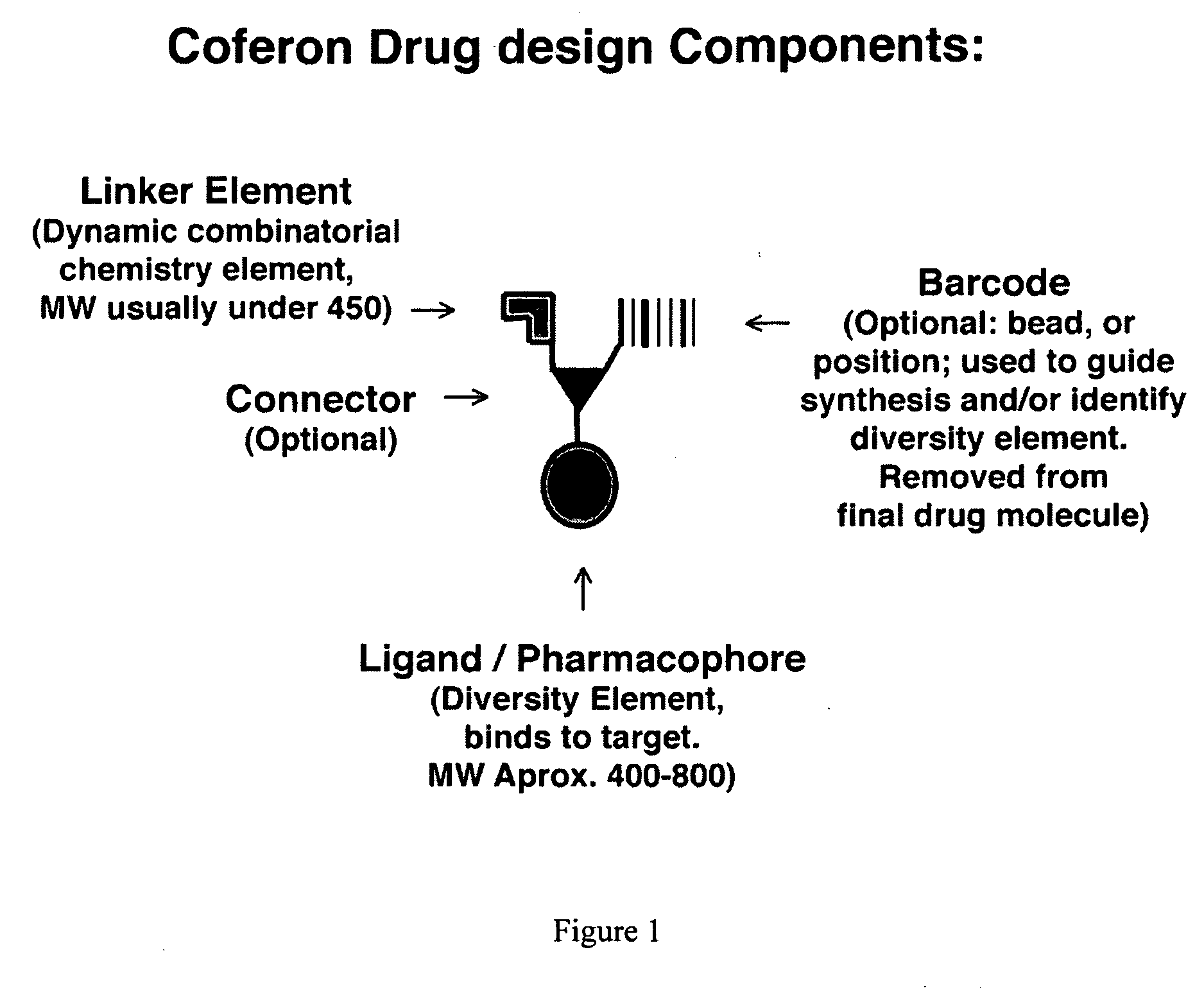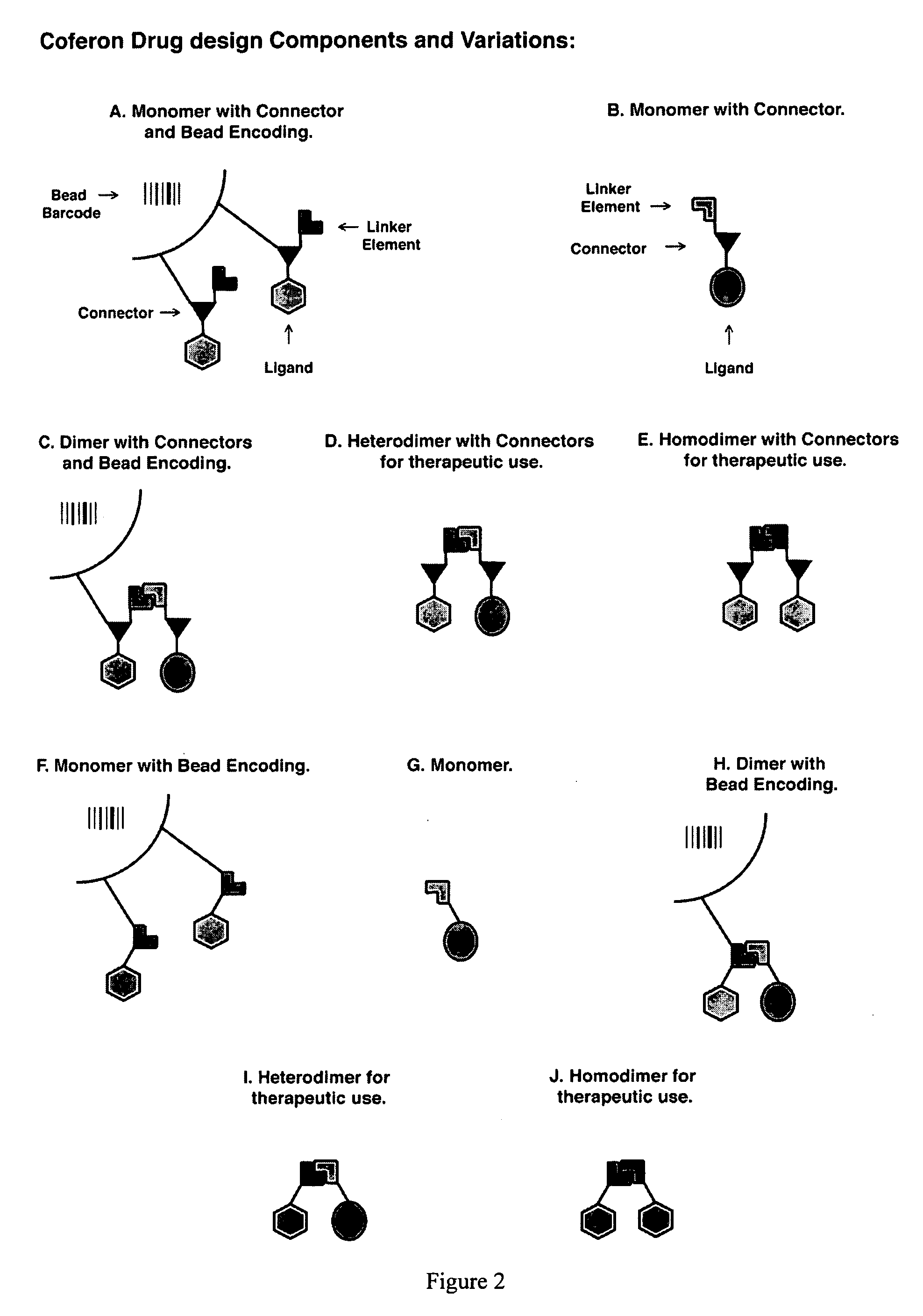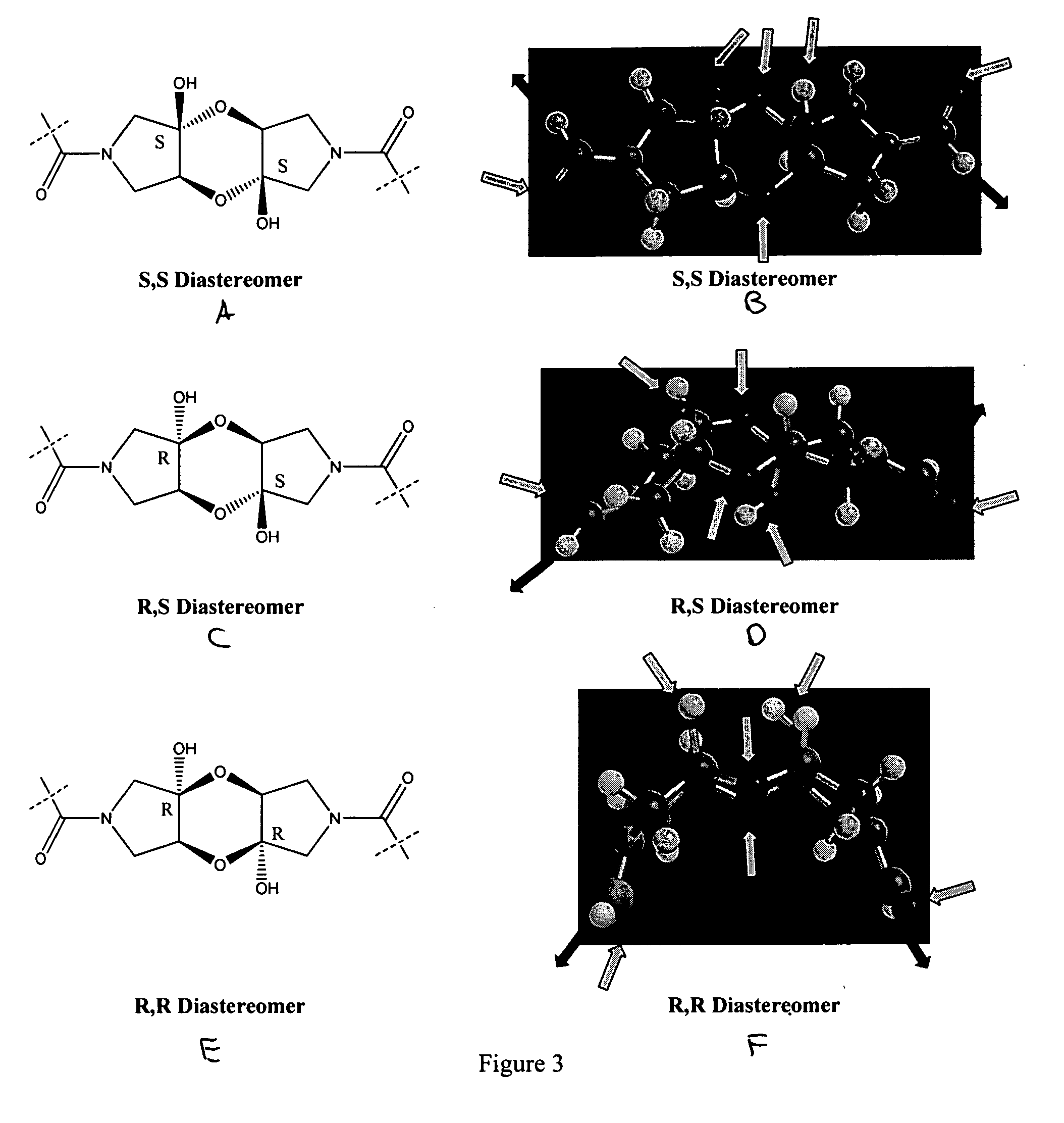Coferons and methods of making and using them
- Summary
- Abstract
- Description
- Claims
- Application Information
AI Technical Summary
Benefits of technology
Problems solved by technology
Method used
Image
Examples
example 1
Synthesis of Pyrrolidone Based Linker Element Monomer
[0599]Pyrrolidone based linker element monomers are synthesized according to the following reaction scheme:
Experimental Procedure:
[0600]
[0601](3R,4R)-1-Benzyl-3,4-dihydroxypyrrolidine-2,5-dione (SLnHK-01-2a (R,R)): To a stirred solution of L-Tartaric acid (50 g, 0.33 mol) in xylene (250 mL) was added benzylamine (36.7 mL, 0.33 mol) and the mixture was heated under reflux at 150° C. for 3 h using a Dean-Stark trap. After the reaction mixture was allowed to cool overnight, crystals were collected by filtration and washed with acetone. The resultant crude product was recrystallized from ethanol to obtain SLnHK-01-2a (R, R) (33.1 g, 45%) as solid.
[0602]1H NMR (200 MHz, DMSO-d6): δ 7.35-7.25 (m, 5H), 6.30-6.26 (m, 2H), 4.55 (d, J=15.0 Hz, 2H), 4.40-4.36 (m, 2H).
[0603](3S,4S)-1-Benzylpyrrolidine-3,4-diol (SLnHK-01-3a (S,S)): To a stirred solution of boron trifluoride ethyl etherate (23 mL, 0.16 mol) in DME (120 mL) were added SLnHK-01-2...
example 2
Synthesis of Pyrrolidone Linker Element Dimer
[0608]Pyrrolidone based linker element dimers are synthesized according to the following reaction scheme
Experimental Procedure:
[0609]
[0610]3a,7a-Dihydroxy-octahydro-4,8-dioxa-2,6-diaza-s-indacene-2,6-dicarboxylic acid di-benzyl ester: To a stirred solution of oxalyl chloride (0.091 mL, 1.0 mmol) in anhydrous THF (5 mL) was added dimethyl sulfoxide (0.095 mL, 1.3 mmol) at −70° C. under an inert atmosphere. After being stirred for 20 min, SLnHK-01-3b (S,S) (0.2 g, 0.84 mmol) in THF (3 mL) was added at −70° C. and stirred for 1 h. Then triethyl amine (0.58 mL, 4.2 mmol) was added at −70° C., the mixture was stirred for additional 20 min at −70° C. and min at room temperature. The reaction mixture was quenched with water, extracted with ethyl acetate. The organic phase was washed with brine, dried over MgSO4, filtered, and concentrated under reduced pressure. The crude material was purified over silica gel column chromatography to afford Dime...
example 3
Synthesis of Pharmacophore with Connector
[0612]Pharmacophores with connectors are synthesized according to the following reaction scheme:
Experimental Procedure:
[0613]
[0614]Ethyl 2-(4-cyanophenoxy)acetate (Cnc-01a): To a stirred solution of 4-cyanophenol (10 g, 84 mmol) in acetone were added K2CO3 (34.3 g, 249 mmol) and ethylbromo acetate (11.2 mL, 100 mmol) at room temperature. The mixture was stirred at reflux temperature for 12 h. The mixture was filtered, filtrate was evaporated, and obtained residue was dissolved in water (50 mL). The aqueous layer was extracted with EtOAc (2×100 mL). The combined organic phases were washed with brine, dried over Na2SO4, filtered, and concentrated under reduced pressure. The crude material was purified over silica gel column chromatography to afford Cnc-01a (13 g, 75%).
[0615]1H NMR (200 MHz, CDCl3): δ 7.62-7.58 (d, J=7.5 Hz, 2H), 7.0-6.80 (d, J=7.4 Hz, 2 H), 4.65 (s, 2H), 4.25 (q, J=8.0 Hz, 2H), 1.25 (t, J=8.0 Hz, 3H).
[0616]Ethyl 2-(4-(aminometh...
PUM
| Property | Measurement | Unit |
|---|---|---|
| Mass | aaaaa | aaaaa |
| Molar density | aaaaa | aaaaa |
| Molar density | aaaaa | aaaaa |
Abstract
Description
Claims
Application Information
 Login to view more
Login to view more - R&D Engineer
- R&D Manager
- IP Professional
- Industry Leading Data Capabilities
- Powerful AI technology
- Patent DNA Extraction
Browse by: Latest US Patents, China's latest patents, Technical Efficacy Thesaurus, Application Domain, Technology Topic.
© 2024 PatSnap. All rights reserved.Legal|Privacy policy|Modern Slavery Act Transparency Statement|Sitemap



